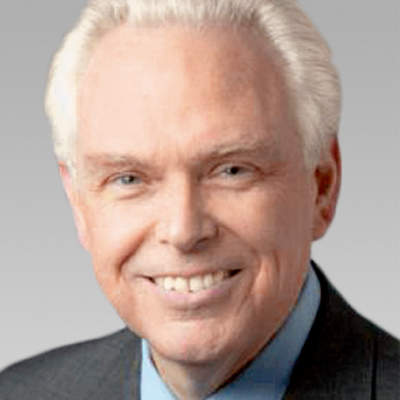Uncovering the biological shortcomings in Down’s syndrome and Alzheimer’s disease
Dr. William Mobley of the Department of Neuroscience at the University of California, San Diego is exploring important new avenues by which to understand the normal brain and the way it is impacted by Alzheimer’s disease and Down syndrome. His work is leading to new treatments and a better understanding of the biology behind these disorders. It is widely accepted that his laboratory leads the field in pursuing these conditions intelligently and aggressively, and they continue to produce outstanding and novel results. They are the largest lab dedicated to these pursuits, with the most researchers, and are one of very few labs whose focus is on the transport of trophic signals in these disorders. Their research is unique in that they explore the biology behind what goes wrong in individuals suffering from these conditions and how they can fix it - they have already made tremendous contributions in this narrow but important niche. Down syndrome is a condition that affect the quality of life of individuals, and Alzheimer’s is a disease that can drastically limit the lifestyle of individuals who have lived a previously full and healthy life. Uncovering therapies that reduce or reverse the effects of these challenges is an important medical focus, and one Dr. Mobley is at the forefront of attacking.
Within the brain, there are proteins released by neurons (brain cells) to help one another differentiate, grow, function, and thrive. These proteins are intended to weld neural circuits together and allow neurons to communicate, with one neuron releasing a signal and that signal binding to another neuron. In normal cells, such as a skin cell, the distance that signal needs to travel may be only a few microns (millionths of a meter) long; in neurons, the signal travels down the axon, which can be up to one meter in length. How then does the signal move down such a long distance? Research has shown that the answer is to package it and attach a “motor,” which takes the signal from the cell body of one neuron down the axon to the cell body of another neuron. This process is the Achilles’ heel of the neuron because this is the process every neural communication must undergo. It is a delicate communication process, and is potentially liable to falter in individuals with diseases that damage neural circuits, causing significant damage to intra-brain communication. Dr. William Mobley, Professor and Chair of the Department of Neurosciences at the University of California, San Diego is studying the basic genetic and molecular mechanisms that support the health and well-being of neurons and the events that compromise this in the context of Down syndrome and Alzheimer’s disease. The proteins belonging to the family “neurotrophins,” particularly nerve growth factor (NGF), which Dr. Mobley studied in graduate school, are believed to have an impact on the neurons damaged by Alzheimer’s disease, which also have applications for patients with Down’s syndrome, because all Down’s syndrome patients eventually develop the same brain changes as Alzheimer’s patients if they live long enough. The presence of extra APP in the brain, a naturally-occurring protein, interrupts neural communication, and Dr. Mobley is interested in understanding how the protein inhibits proper brain functioning and how that process can be corrected and/or reversed.
Dr. Mobley’s current research projects study the signaling of neurons and the applications in patients with Alzheimer’s and Down’s syndrome:
1.Dr. Mobley is researching basic normal biology of signaling in axons of cells in culture and normal animals. He is interested in answering: How does signaling occur? and What’s going on within the axon? Knowing that the axon is approximately a meter long, it would seem unlikely that a neuron would have to wait for the entire duration of time it takes the signal to travel through the axon to receive the signal communication. It is more likely that portions of the cell’s ability to code for proteins have been imported directly into the axon, enabling NGF to signal locally and allow a neuron to respond more rapidly to changes in its environment. This establishes a combined early initial response with the standard later response, increasing overall signaling ability.
2.Alzheimer’s disease and Down’s syndrome are being investigated to identify what goes wrong in these diseases: specifically, What are the proteins involved? What is going wrong with these proteins? and How can it be corrected? Recent findings point to changes in both the early responses to neurotrophin signals as well as those that are transmitted over the long distances traversed by axons. Understanding the biology of these diseases will pave the way for developing therapies that can prevent the negative effects of these diseases. There are essentially three leading approaches:
- Reducing the levels of excess APP protein by “turning down” the levels of active protein.
- Preventing the toxic forms of APP from compromising cellular activity by degrading the toxin more effectively and efficiently to eliminate the harmful effects.
- Solving the “transport problem” by modulating the activity of pathways impacted by the toxic forms of APP.
All of these approaches are targeted at aiding the cells being attacked by excess APP in Alzheimer’s and Down syndrome patients.
It was revealed through studying Down syndrome in cells in culture and animal models that in the brain there is normally a balance between neurons that electrically excite other neurons and those that electrically inhibit other neurons; in patients with Down syndrome, there is an excess of the inhibiting activity. Dr. Mobley is exploring the cause for this change and has evidence that APP and its toxic forms contribute. The search for additional genes that play a role is an important focus of research and excellent candidates have emerged. This will support efforts to develop therapies to correct the imbalance. Indeed, it may be possible to orally deliver small molecules to reduce electrical inhibition thus releasing the brain circuits crucial for restoring a higher quality of life for individuals suffering from this condition.
Bio
Dr. Mobley grew up in Nebraska with a genuine love for science, and it became evident to him while in college that he would pursue medical school and become a doctor. It was also clear, though, that he begin dreaming of attending a prestigious medical school. While speaking to this point with a friend, it was brought to his attention that, not being from a particularly affluent family, the costs of a respected medical school could prove to be prohibitive. A solution to this problem was then presented: if Dr. Mobley first obtained his Ph.D. and did research for a university, his medical school costs would be covered by that university. This was now an option Dr. Mobley was seriously considering, but he recognized that before embarking on such a serious program, it was advisable to explore his interests and confirm that research was an attractive path to medical school. To do this, he worked in a lab interested in studying hemoglobin, particularly sea cucumber hemoglobin. Part of his research involved Dr. Mobley traveling down to the Gulf Coast by Pensacola, Florida (not a bad place for a Nebraska-born young adult) and observing these beautiful animals in their natural habitats. He would then collect specimens to bring them to his lab for hemoglobin extraction and characterization. It was during this work that he fell in love with the scientific process and the idea of scientific discovery.
When it was finally time to apply for medical school, Dr. Mobley was able to narrow down his choices to Stanford University and the Albert Einstein College of Medicine, at which he had taken a summer internship that allowed him to continue his undergraduate studies on hemoglobin. He had many opportunities at Einstein as a result of his summer research position, including access to top-of-the-line equipment at Bell Laboratories, which would provide valuable insight about the hemoglobin samples Dr. Mobley was studying. Still, a respected family member expressed concerns about living and working in New York City, and eventually convinced Dr. Mobley to explore Stanford and look for a hemoglobin researcher. A significant mentor opened a position in his lab for Dr. Mobley; there he would continue his work on sea cucumber hemoglobin, an area of research for he which was determined to become the “world’s expert”. After a few months performing this research in California, it became apparent, much to Dr. Mobley’s dismay, that there was a lack of interest in and respect for sea cucumber hemoglobin research. He was eventually convinced to switch his research to nerve-growth factor (NGF), which ultimately proved to be a project he loved and was quite passionate about.
After studying NGF in great depth, Dr. Mobley realized it was time to focus on a direction for his career, and the answer did not immediately reveal itself to him. It was during a conversation with a colleague in the hallway of his research facility that Dr. Mobley found his direction. It was brought to his attention that because he studied the nervous system, and particularly the developing nervous system, it was logical that he become a pediatric neurologist. This was a career path that Dr. Mobley had not considered before, but one that he would ultimately pursue. It was later in his career that NGF, the protein he studied at Stanford, was identified as a significant protein in Alzheimer’s disease, which explains his current interest in the topic. Ultimately, Dr. Mobley is motivated by his inherent love of science, and the hope that his work has the potential to influence treatments that will improve the lives of individuals with neurological disorders.
In the News
Publications
Videos
Awards
Dr. William Cohen Researcher of Distinction Award, 2015
Presented by the Lumind Foundation
Hope and Courage Award, 2014
Presented by the Alzheimer's Association, San Diego
Health Hero, 2012
Presented by the ALS Association of San Diego
Congressional Record: Award in recognition of contribution to Down syndrome - Pete Sessions (House of Representatives), 2011
International Sisley-Jérôme Lejeune Prize, 2011
Presented by the Jérôme Lejeune Foundation
Christian Pueschel Memorial Award for Research in Down Syndrome, 2007
Presented by the National Down Syndrome Congress
Cotzias Award, 2004
Presented by the American Academy of Neurology


